Rainwater isn’t all its cracked up to be. It swells, freezes, causes mold and rot, encourages mosquitos and washes things away. New England (where I currently live) isn’t exactly waterlogged. But the humidity and all that goes along with it, make me long for arid western climes of my youth. Cool comfortable evenings that follow warm days beckon us to move outside to eat and lounge under the stars – to really use outdoor space as we might another part of the home. Desert dwellers often begrudge the lack of water, but I say embrace it. You have a built-in garden design style that is unique to your region and will create beautiful results. Use xeric (low water) landscaping and gardening techniques and design elements from native cultures to create an oasis where you can celebrate family, traditional customs, art, and natural beauty.
This California style garden is in the Laguna Hills and I hope it will inspire your to design and build your own Mexican hacienda garden.
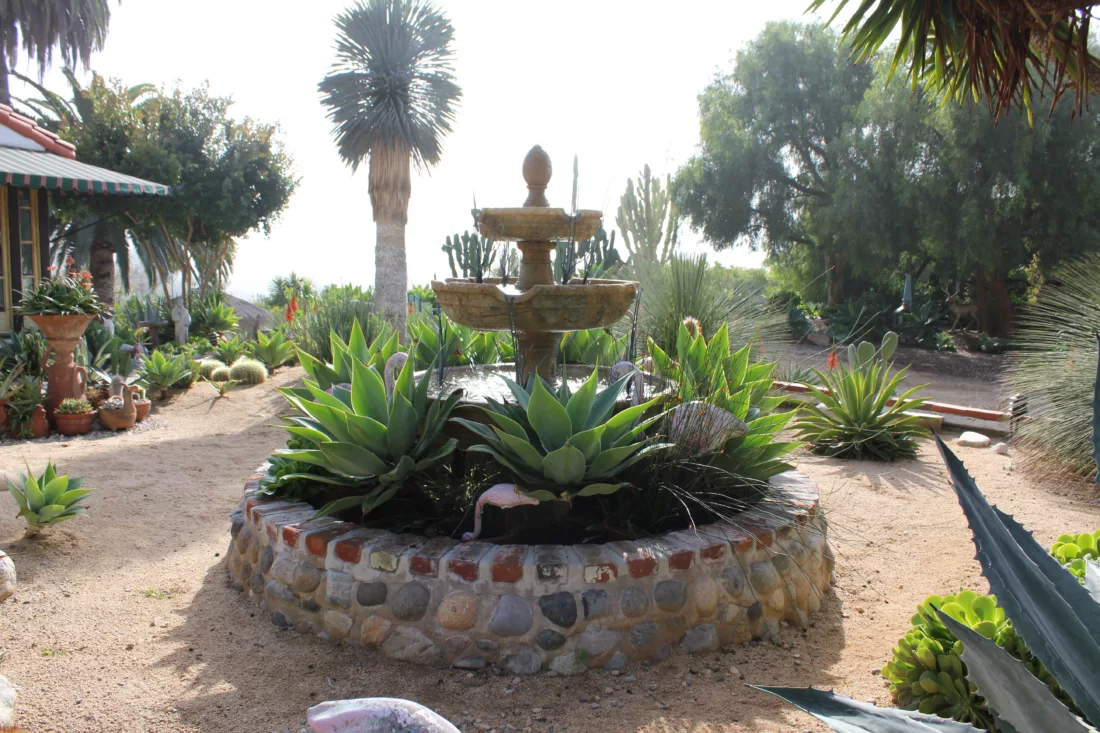
Mark and Cindy’s Southern California Style Garden
Mark and Cindy’s house, called The Bear Flag (named for the house where everyone would come for comfort and meetings in John Steinbeck’s novel Cannery Row), was an overgrown wreck when they bought it. They filled 12 large garbage bins with brush and debris from the garden before they could get started with leveling, installing irrigation and drainage, and rebuilding the terraces. The garden is planted with drought-tolerant cactus and succulents. This helps with fire prevention – a serious concern in California’s Laguna hills.
Inspired by the “Barrio Viejo” in Tucson, AZ and the architecture of the home, Mark and Cindy let their penchant for antiquing and perusing flea markets take over. The garden is filled with art and treasures that were collected over time throughout the southwestern United States.
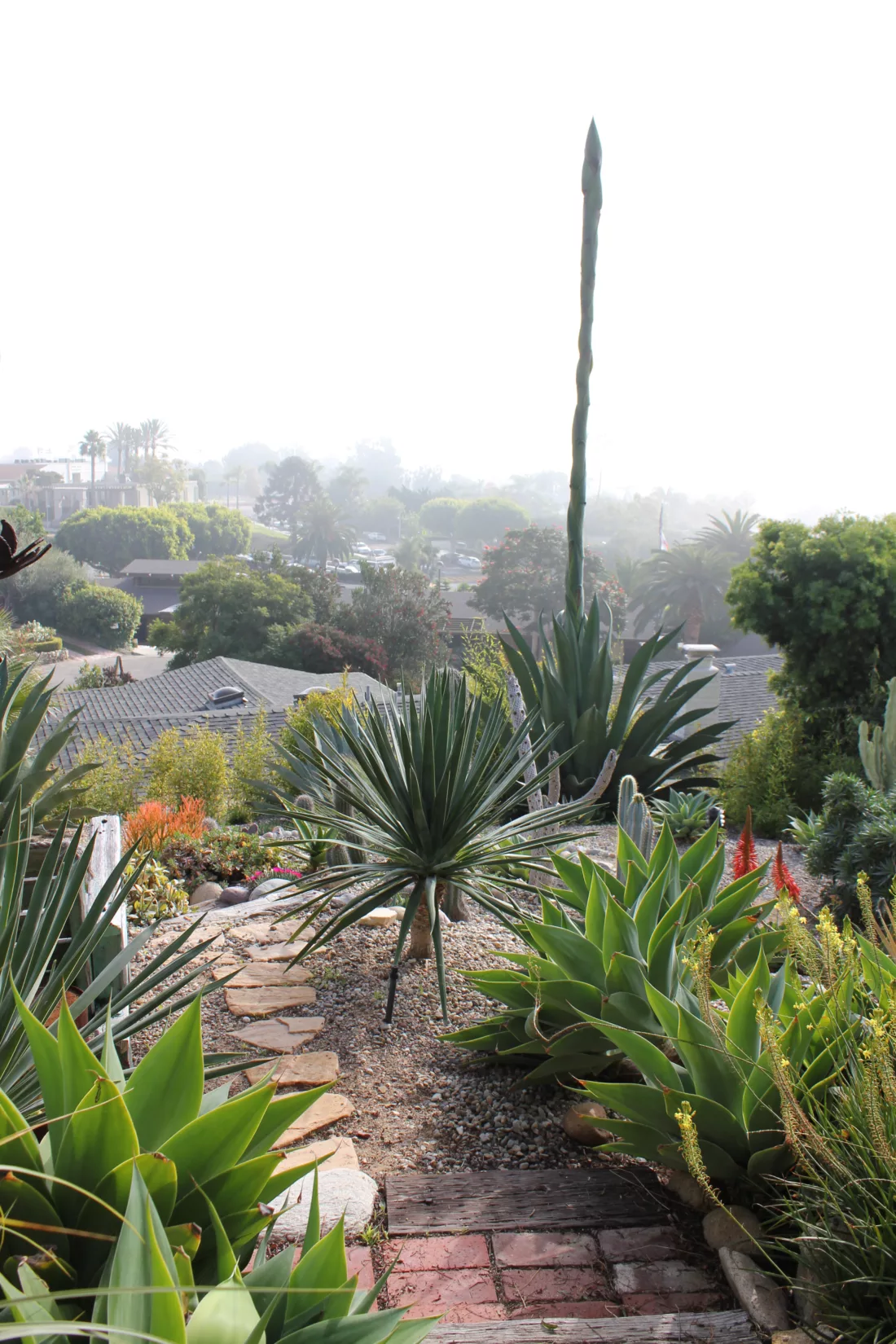
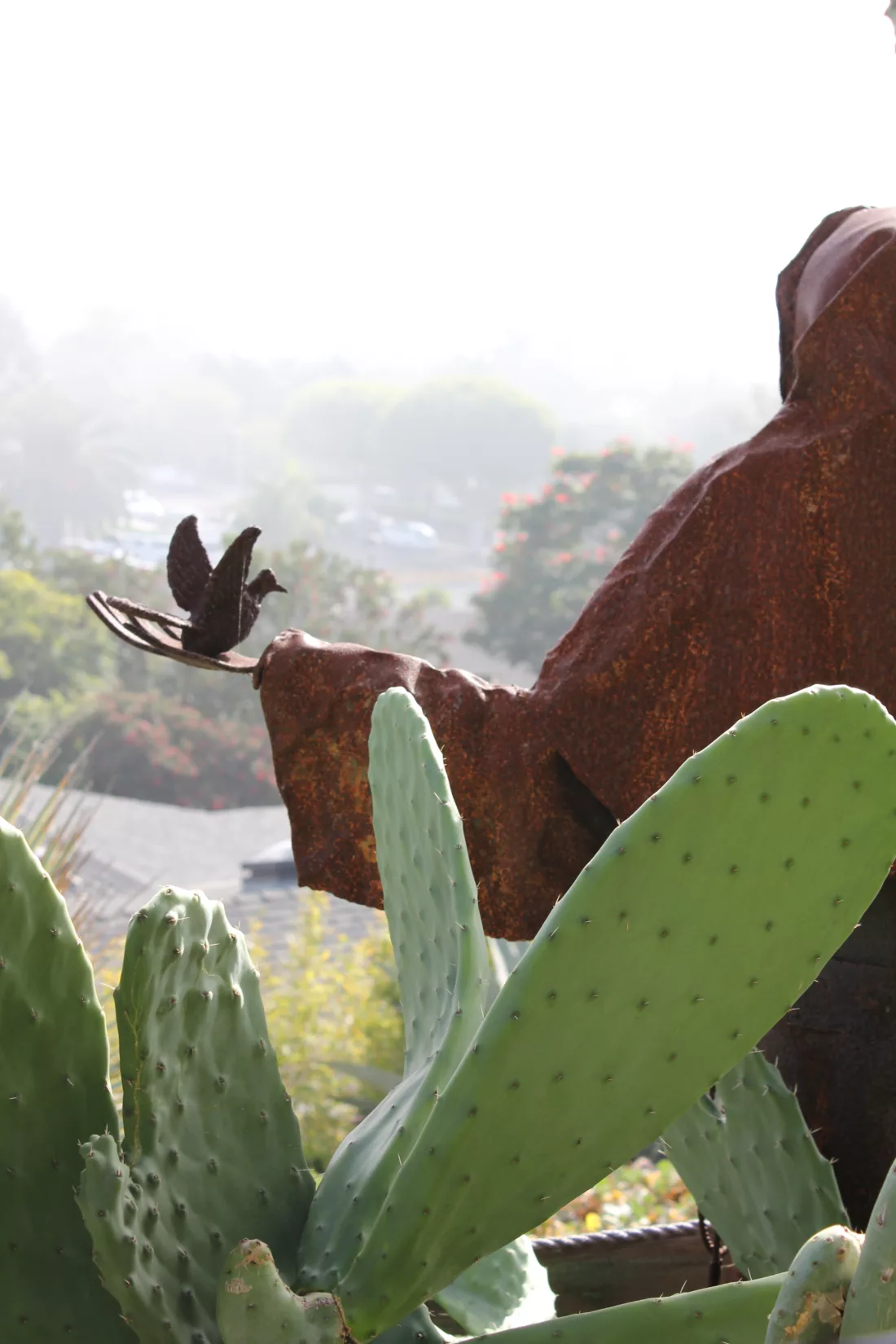
How to Create the Xeric Mexican Hacienda Garden Style
Let Colors Be Bold
Big skies, really long views, colorful landscapes, abrupt mountains, and dramatic contradictions, and a focus on family inform the combined Xeric and Mexican Hacienda garden styles. Because it’s nearer the equator, the light has dramatic effects on the mood of a landscape. It is the main reason for why some colors work so much better in some places than in others. I could no sooner get away with a fuchsia wall in New England than my nearly black house would work in Arizona. Bright pinks and purples, electric blues and vivid yellows, oranges and reds all reflect the beautiful and abundant light of these regions and give them their character. The xeric hacienda celebrates light and color and works with the reality that water conservation requires, while imparting an exotic, south-of-the-border sense of style.
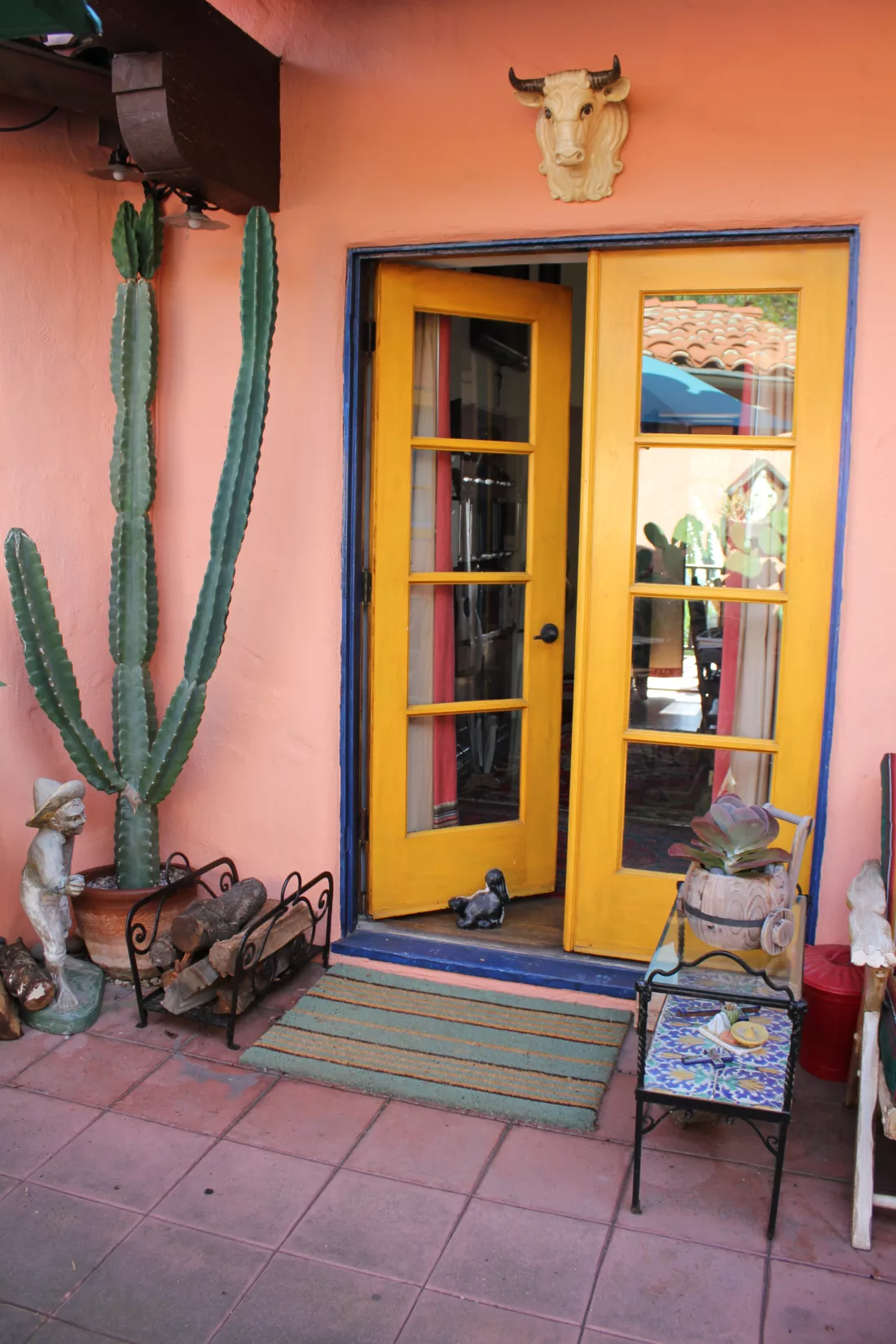
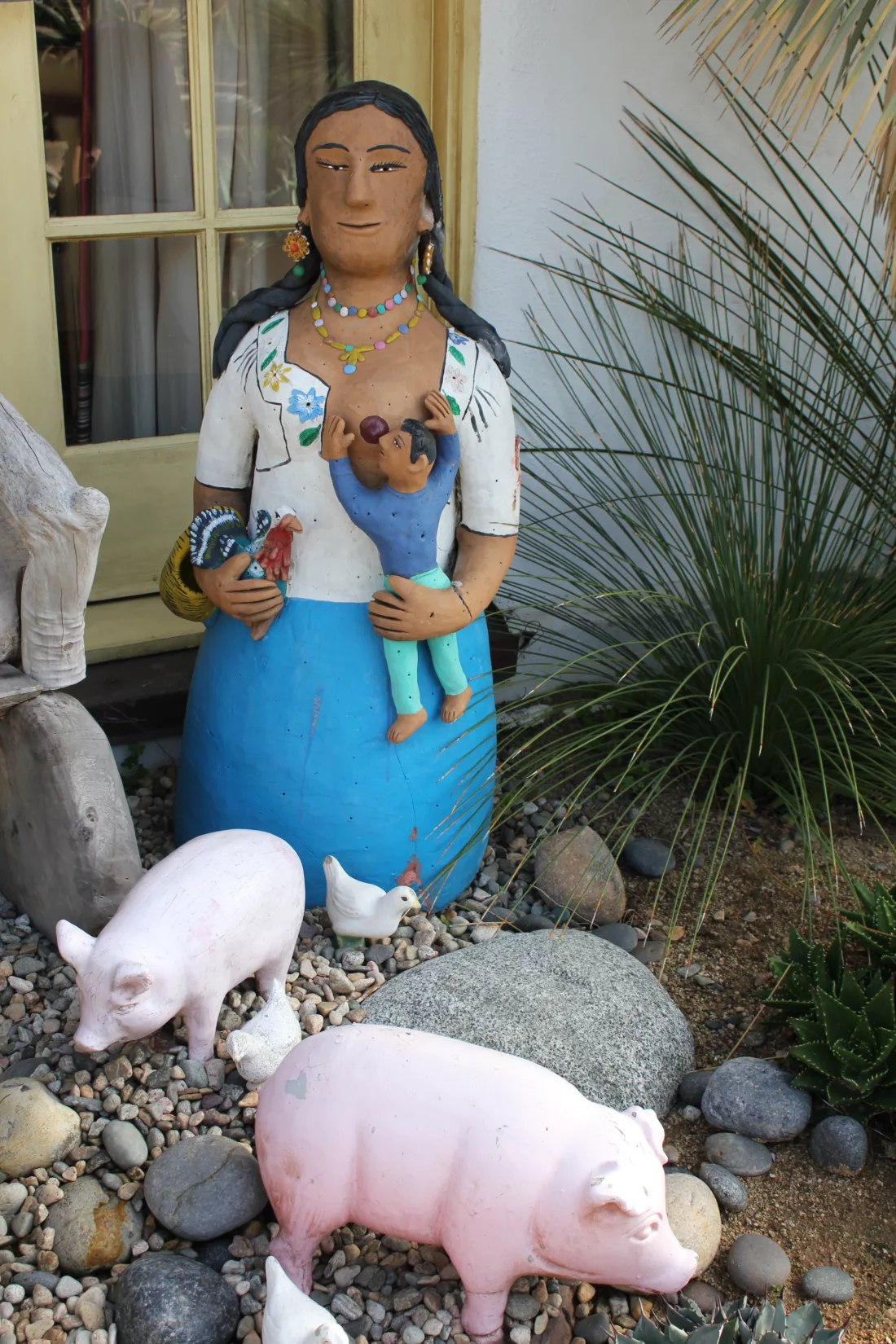
It’s all in the details – Use the right materials
Wrought iron, stone, earth, and rustic wood (usually heavily marked with age) is often used in solid and simple ways. This type of garden can get creative with the use of gravel (try various colors and textures to make designs and paths or to delineate areas of the garden), finishes (stucco, both painted and natural, as well as concrete are all great options) and smooth tiles can be used to add flair and pattern.
Hand painted stencils adorn walls, and the rusty remnants of generations past are often re-made into folk art and is used liberally.
Find authentic Mexican art and containers on Charish.
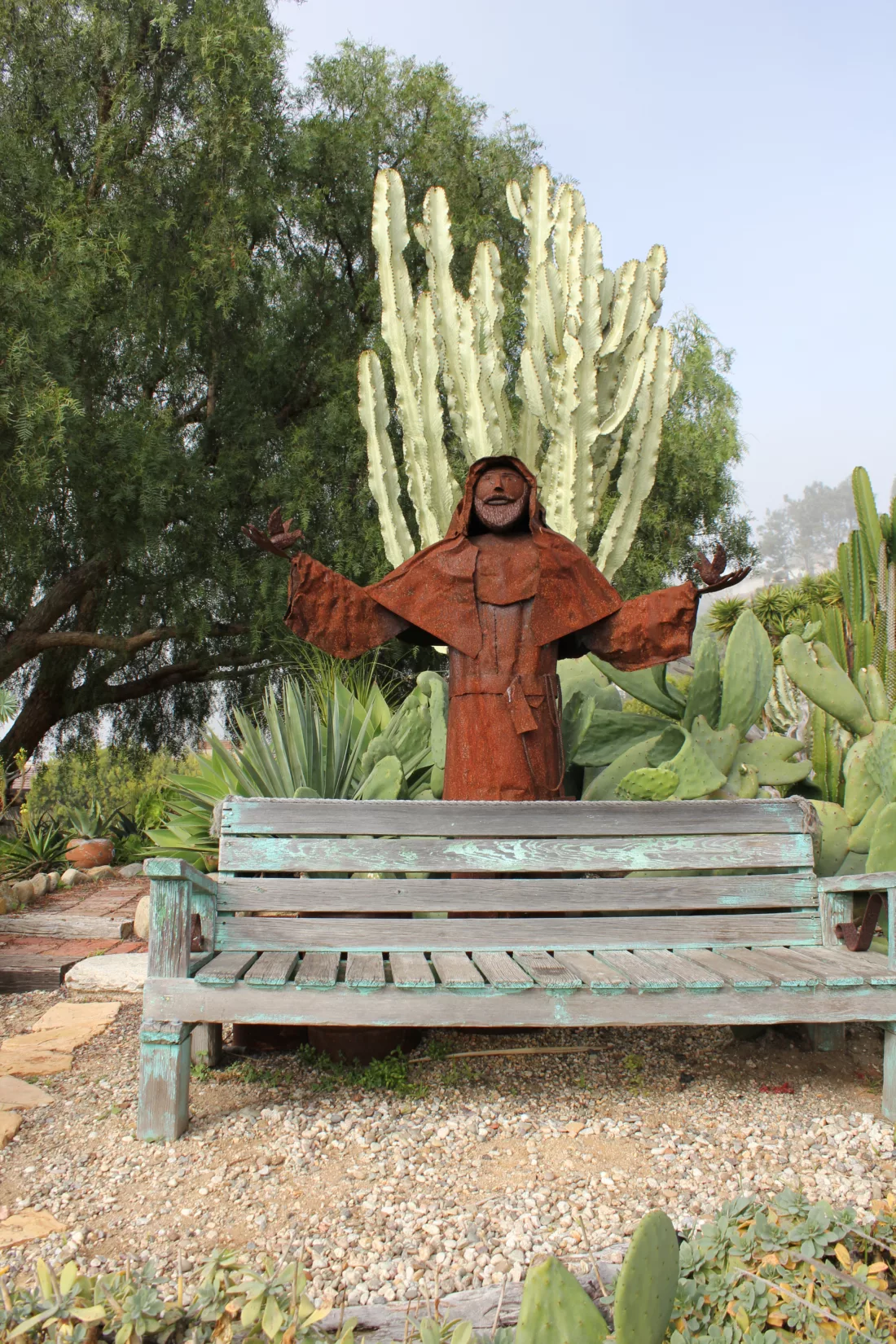

What is at the heart of a Mexican garden?
A hacienda garden is traditionally focussed on creating a place for family and friends to be together. Mexican garden design is influenced by indigenous cultural beliefs (Mayan, Toltec), Spanish Colonial, Moroccan, and Moorish architectural style. Family Altars (called ofrendas) help to maintain th memory of deceased family and friends.
To great yours, lovingly assemble keepsakes and items that recall family and loved ones. Combine them on a table or shelves along with candles and either fresh or paper flowers to create a beautiful and constantly evolving garden shrine. Freely include the festive spirit of regional celebration decor and even religious, mythological and superstition-based icons that are important to you.
Color symbols, which are used in the commonly seen papel picado (tissue paper pennants) decorations embed additional meaning. Some of the interpretations include purple (for pain, suffering, grief), white (for hope and purity), pink (for celebration), red (the catholic church and blood), yellow and orange (the marigold, the sun, light) and rainbow for all other fiestas.
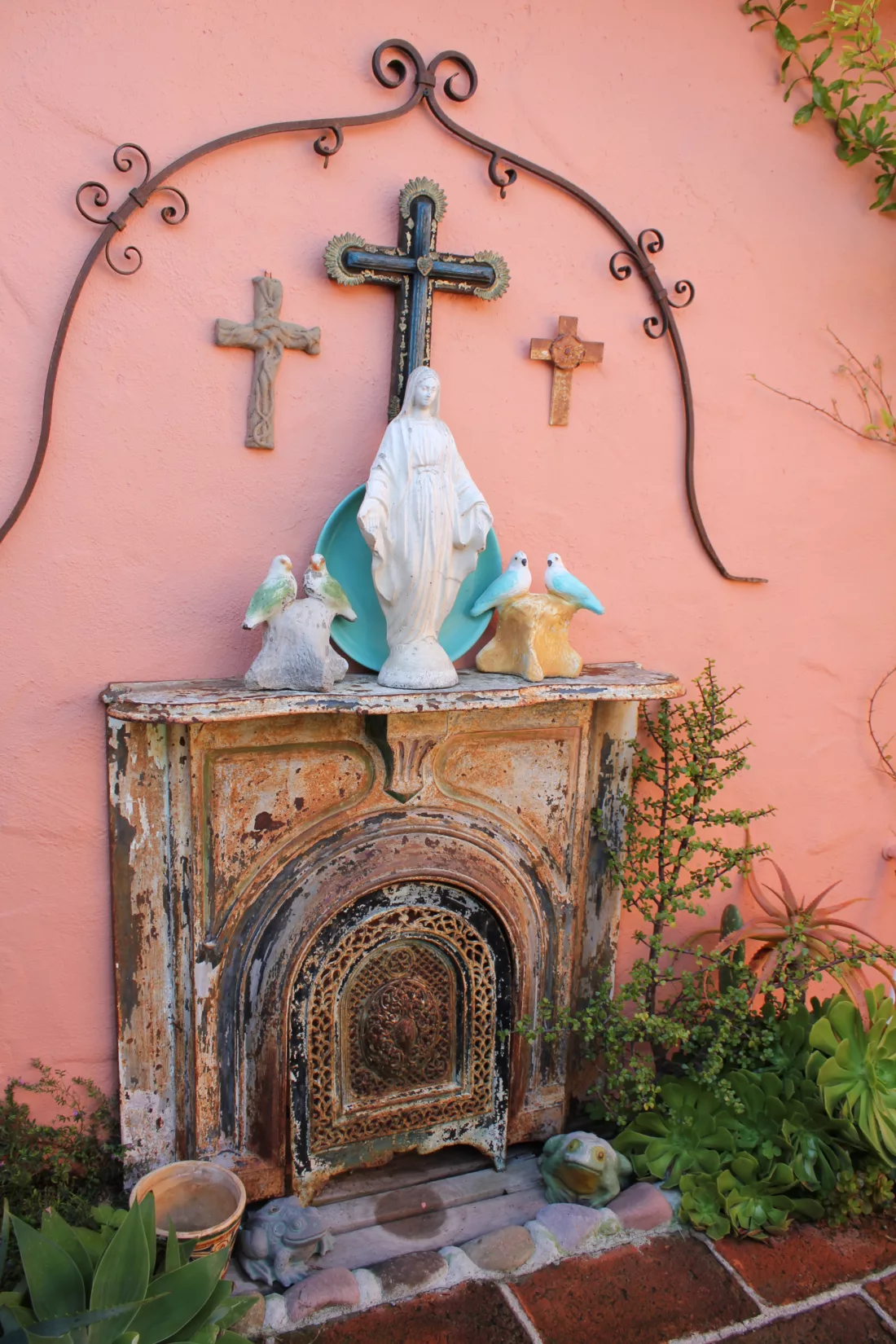
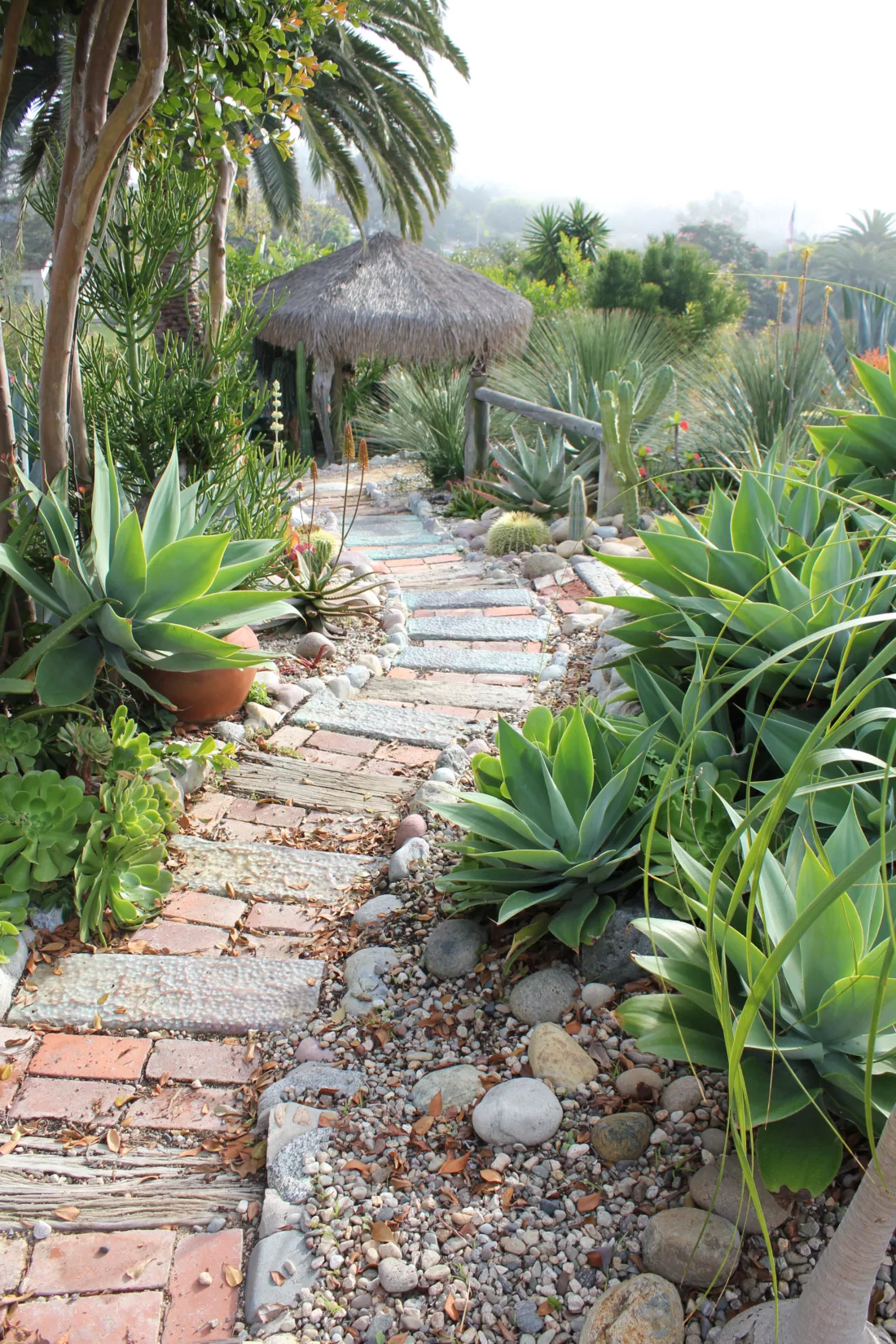
Use Hefty Doors
In hacienda style design, doors come in all sizes and are simply everywhere. They make for a grand entry into the inner garden but they are often repurposed as tables and other furniture. The doors are rugged and romantic and often have over sized nails and hinges to match the thick rustic wood.
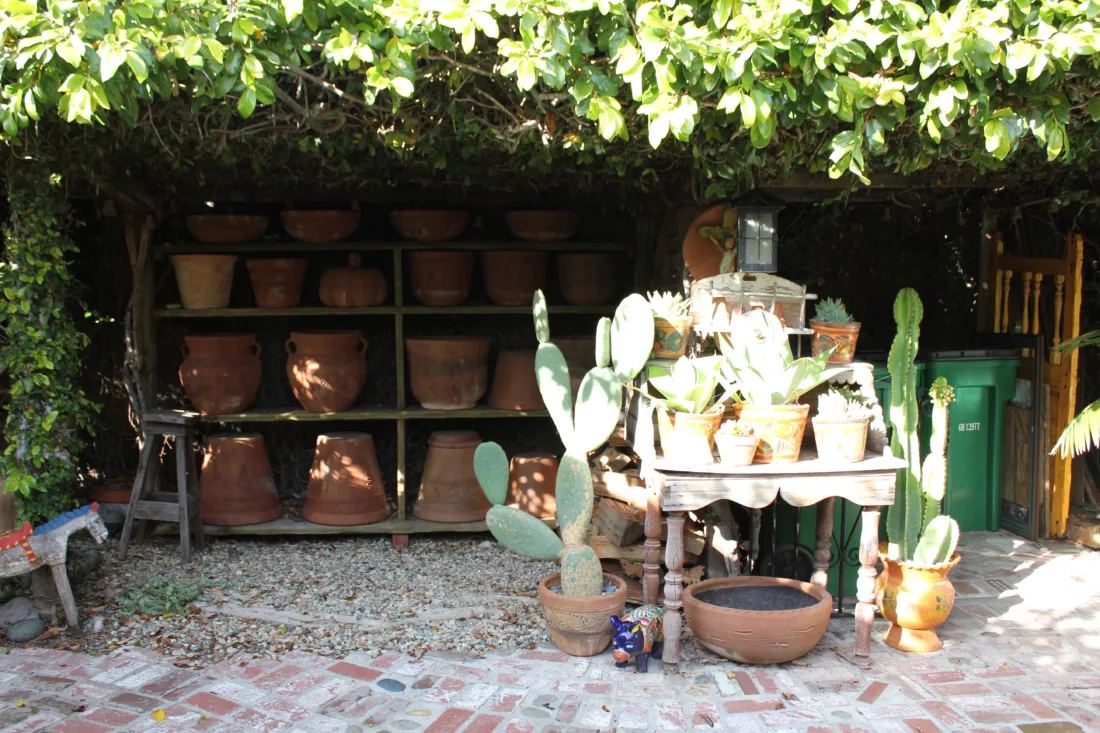
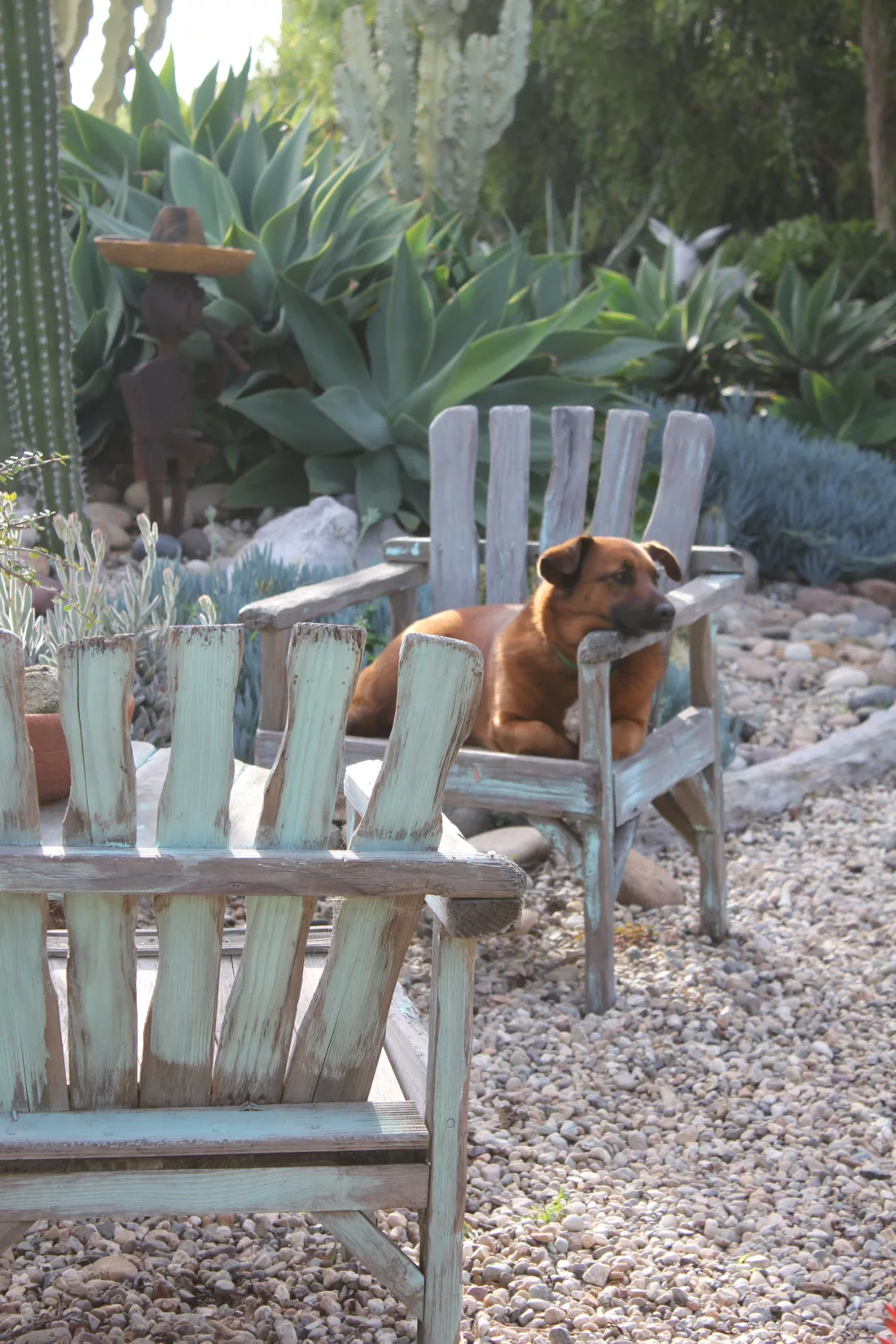
Water is Essential.
In the hot and dry, water provides a welcome cooling relief as well as soothing sound. Tiered fountains are typical focal points in courtyards but wall fountains are also common. If you have impermeable surfaces, consider channels for the water to travel in when it does rain. You can plan for rain gardens at the end of a drainage channel or make rills to retain water for aesthetic, cooling or playing purposes. Kids of all ages love nothing more than a channel of water running through the garden.

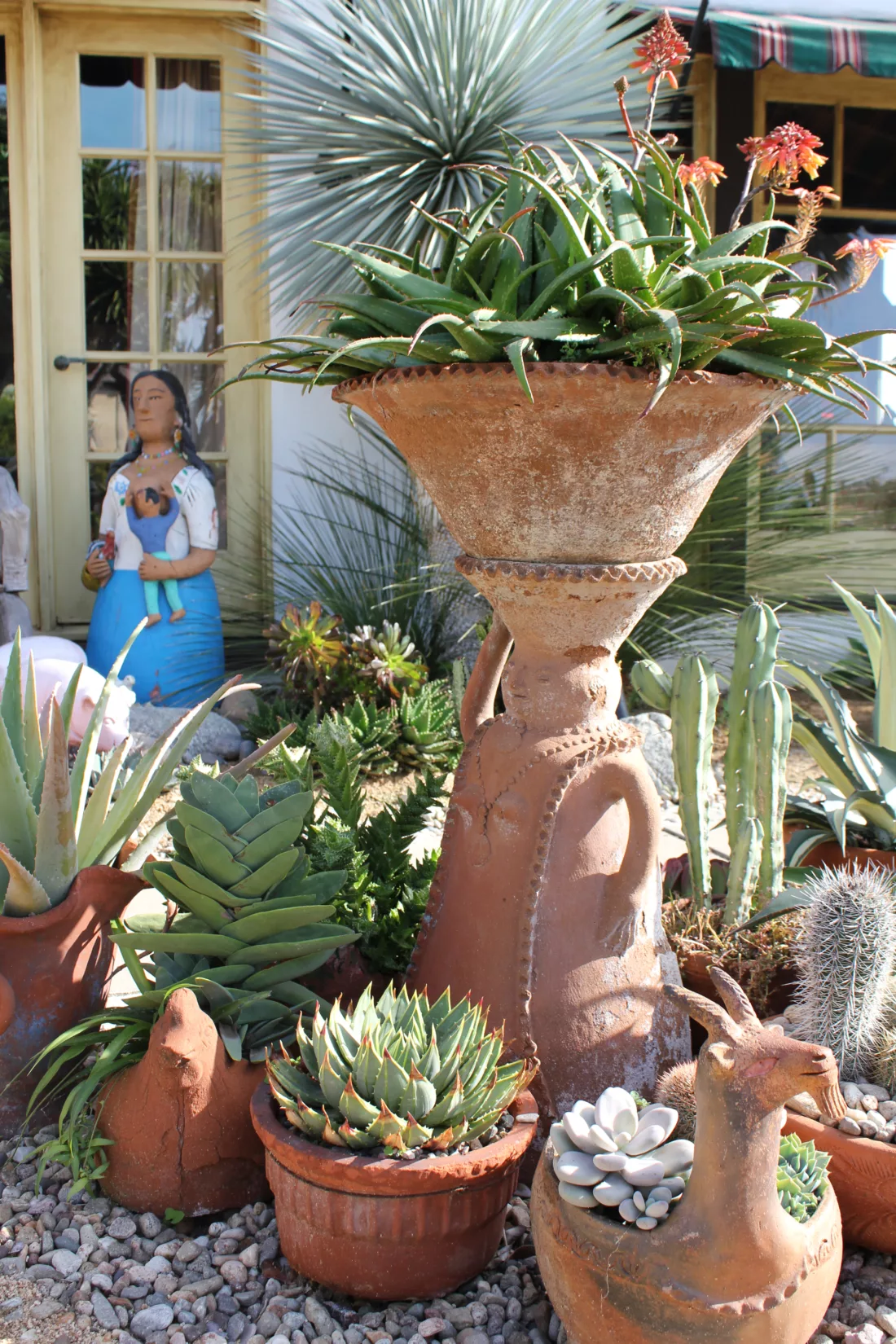
Talavera Style
Talavera style painted terracotta as well unpainted containers and chiminea fireplaces are extensions of the artesanía culture and the traditional way of life. Use tiles throughout the garden as decorative elements or as flooring over a concrete base. The fireplace, the footed planter and the furniture all share characteristics like shape the curls of the iron.
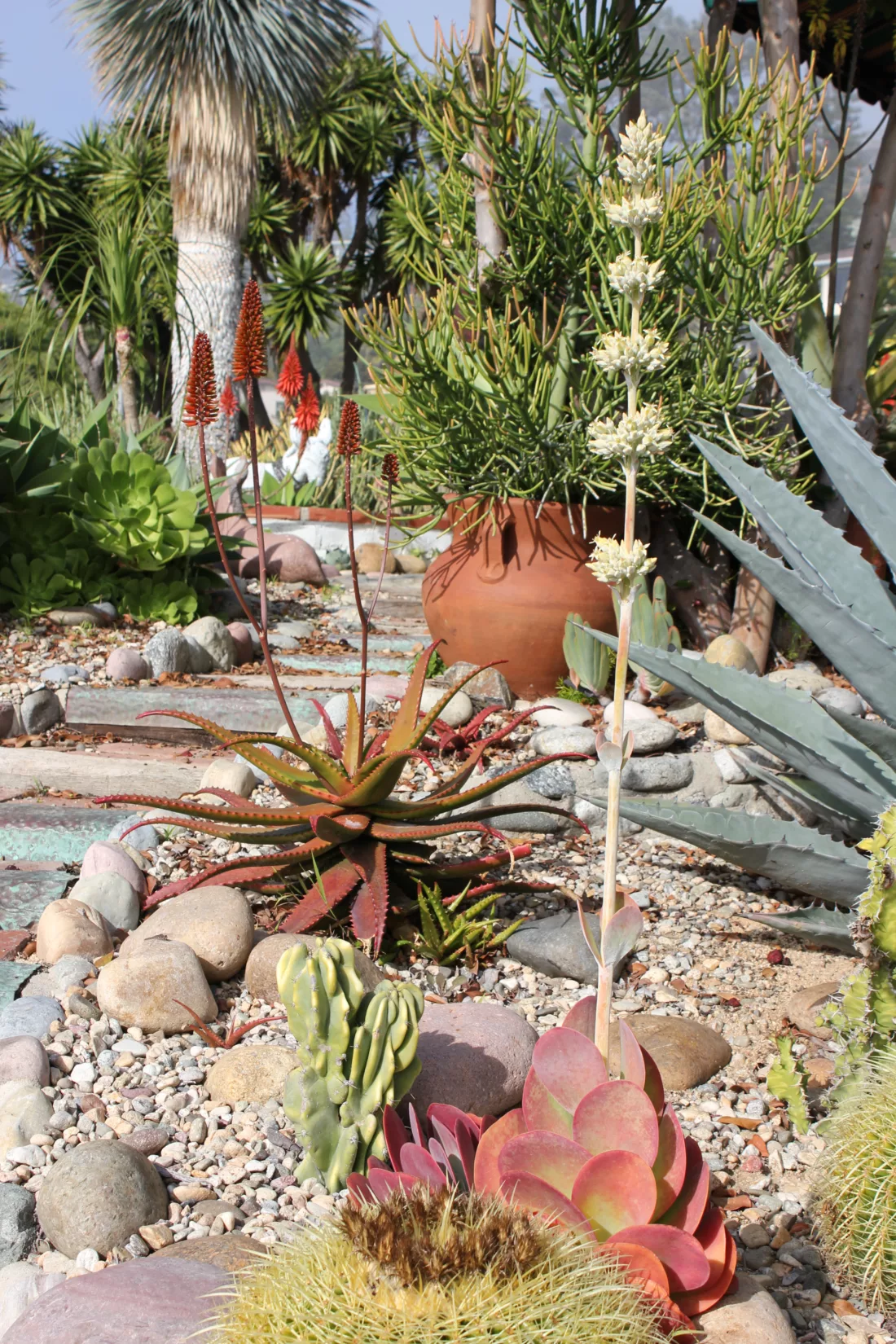
Planting in the Xeric Style Garden – Architectural Plants
Use ‘architectural plants’. That is, plants whose distinctive characteristics tend to be structural. Their features tend not to be soft but rather tall, pointy, perfectly spiraled, supremely orderly or in possession of some other strikingly architectural feature. Because these qualities catch your eye, it is not as necessary to have big groupings of plants as you might in other styles. Instead, one fantastically perfect agave (for example) can create a focal point. These plants aren’t the sort of thing you want to have others crowding the view of, so make sure you give them the space they need to shine. That said, I often find that where one works, so too will 3 or 5. But that is down to your own space restrictions and personal flair.
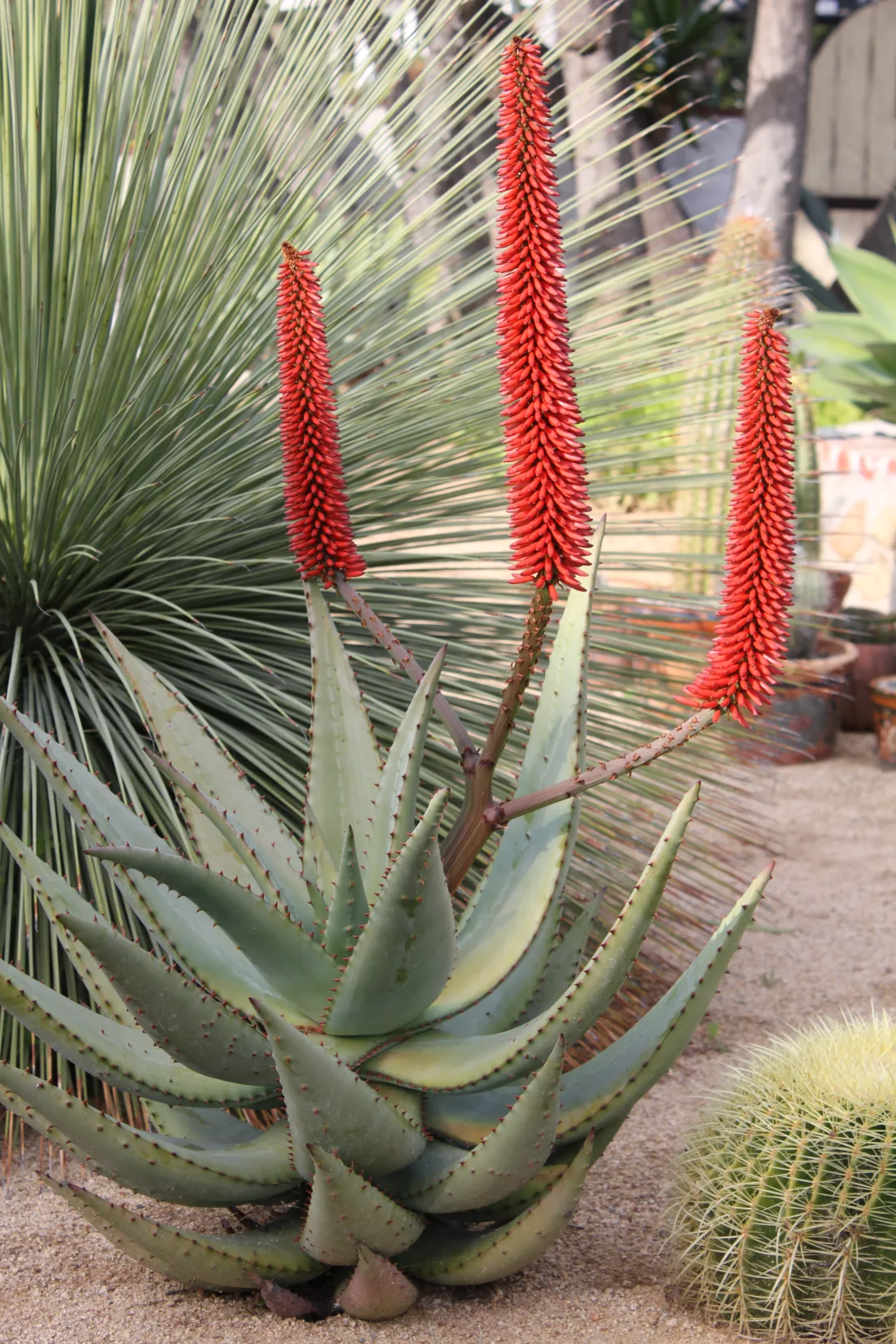
Plant plenty or water-wise Succulents
Succulents and their fleshy water storing leaves do well in dry environments. In fact they will quickly die by way of turning to mush if you let their feet stand too long in water. Use them in containers (I love them planted in interesting bowls and used as centerpieces), as ground covers, or in vertical gardens.
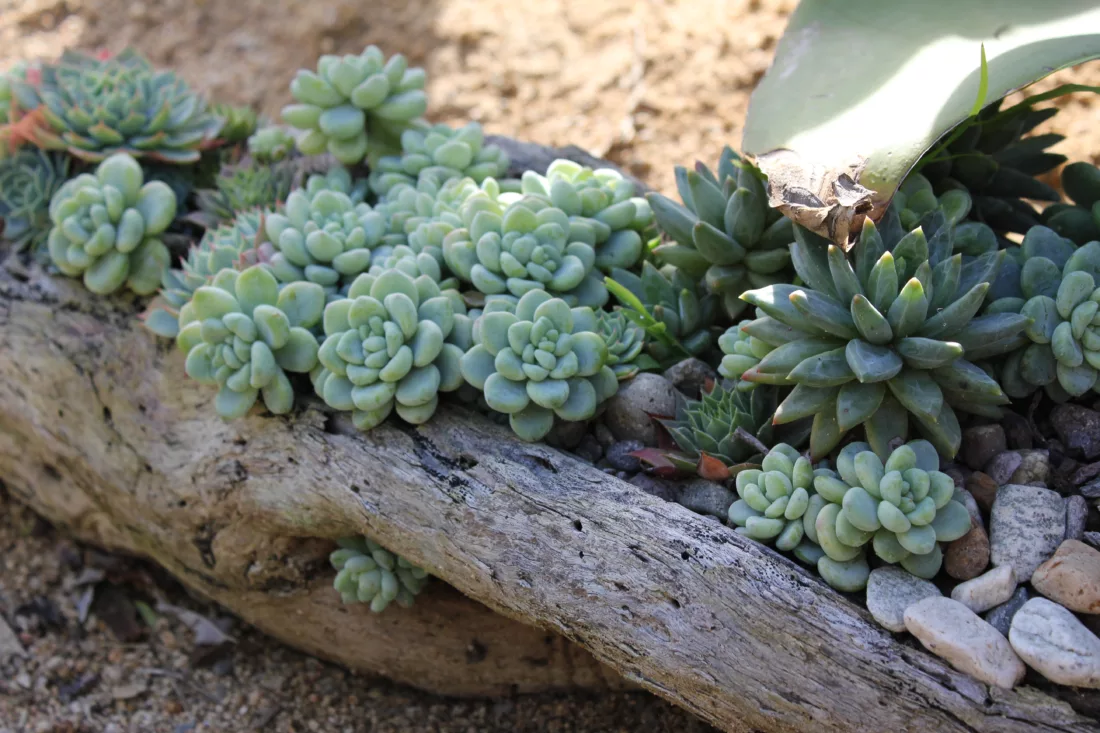

Discover Native Plants
Look around and see what grows wild where you live. This will be the first step towards understanding the characteristics of your environment and using plants that have naturally adapted. It is also handy to think of other areas in the world that are similar to yours. Research native plants from those places. Xeric gardeners should not only look to the desert southwestern US natives, but could also to the Maquis plants of the Mediterranean, and the desert and grassland plants of South Africa (to name a few).
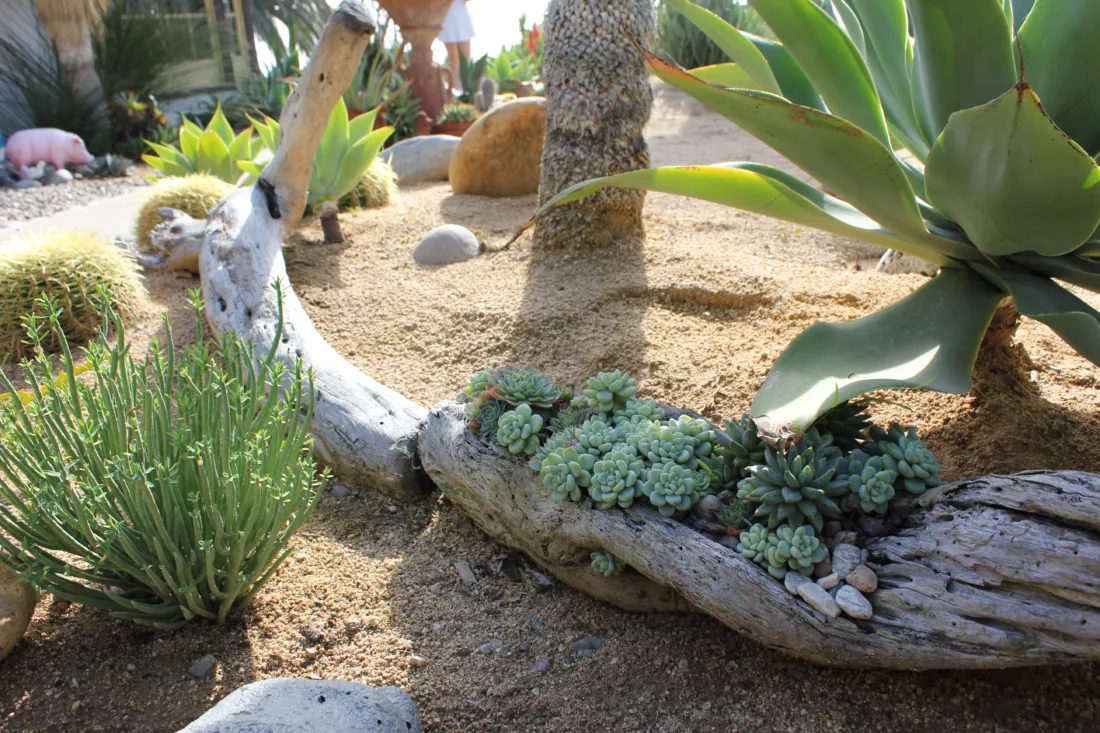
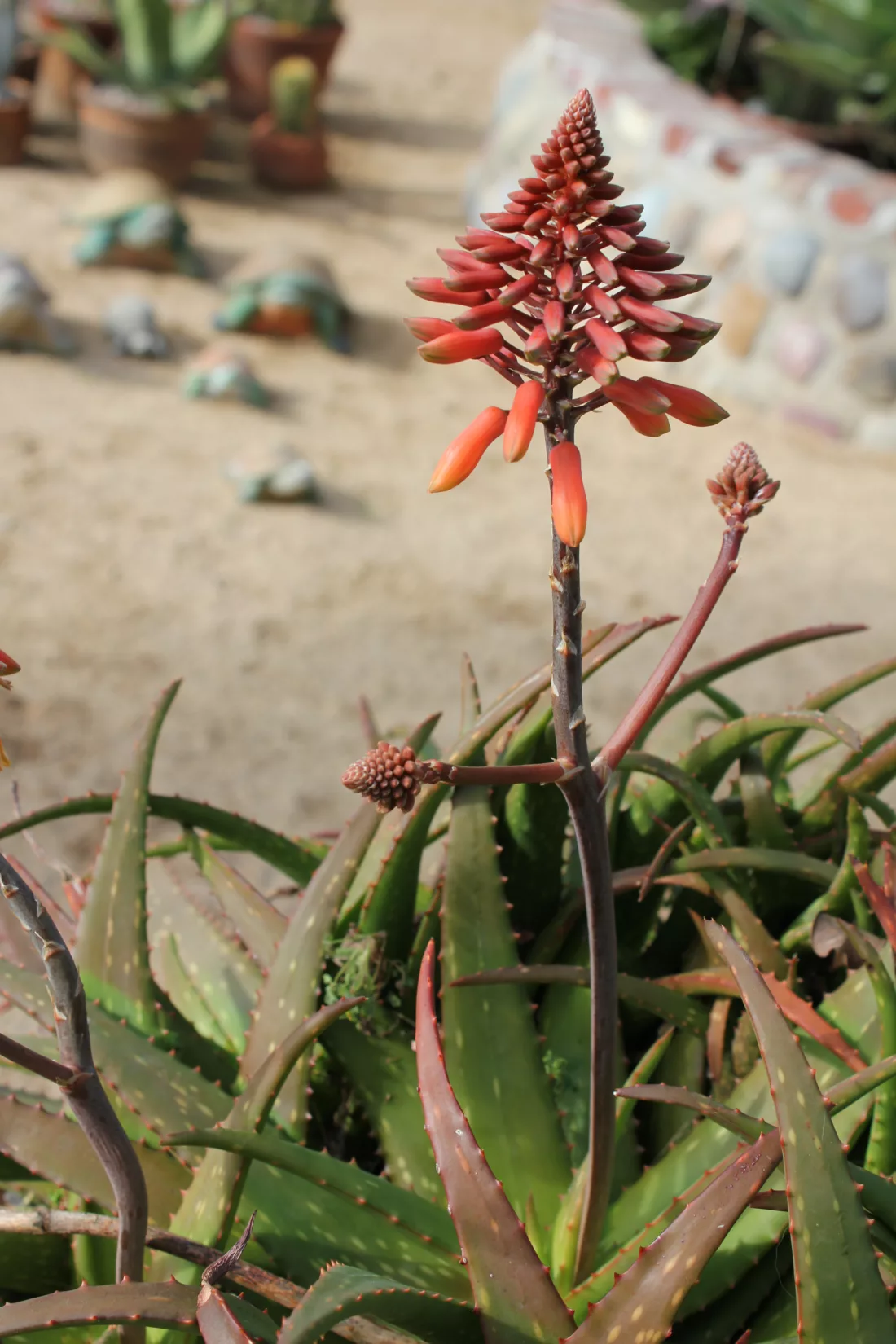
“Barrio Viejo in Tucson is a sweet, beautiful place my wife and I love. It has a beyond simple, primitive beauty; the colors and atmosphere are magical.”
-Mark Evans
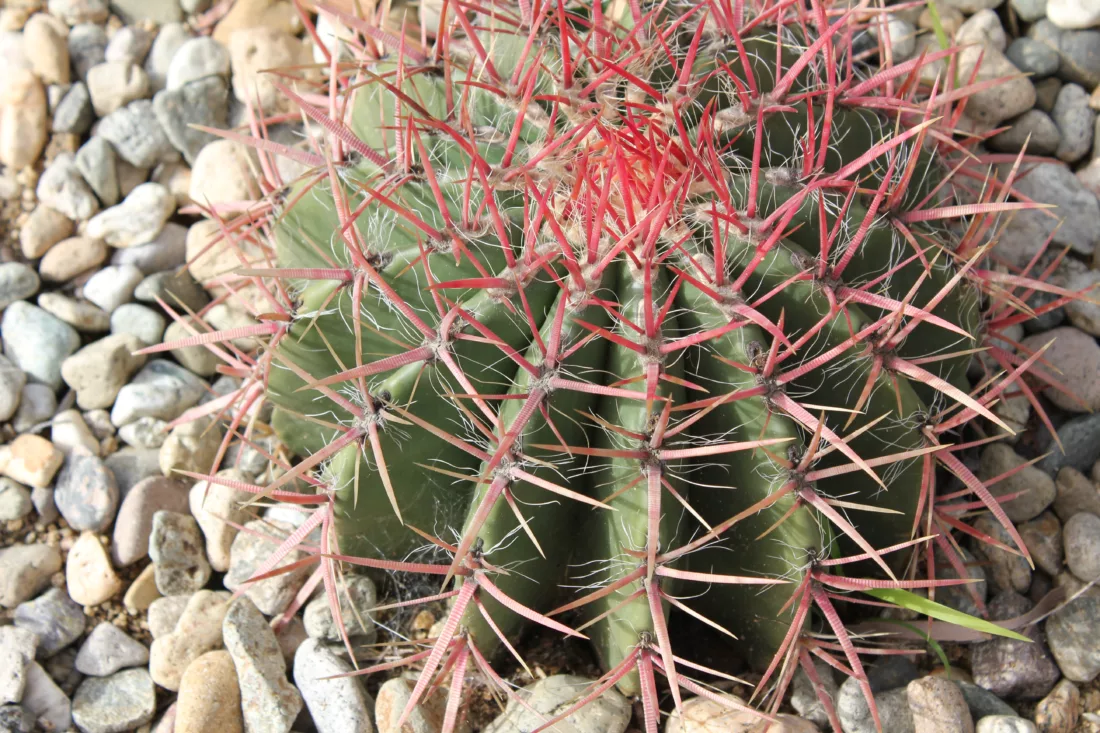
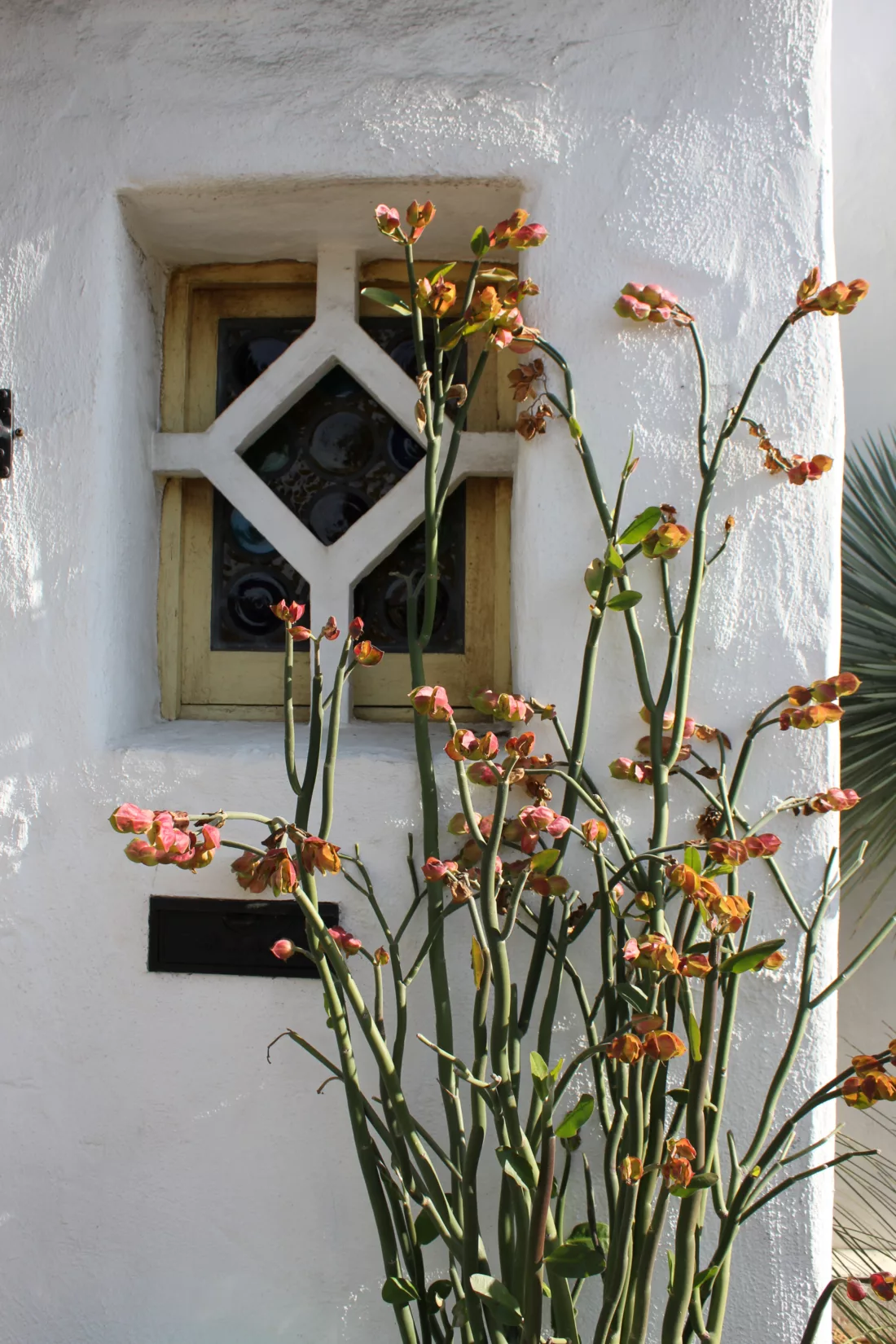
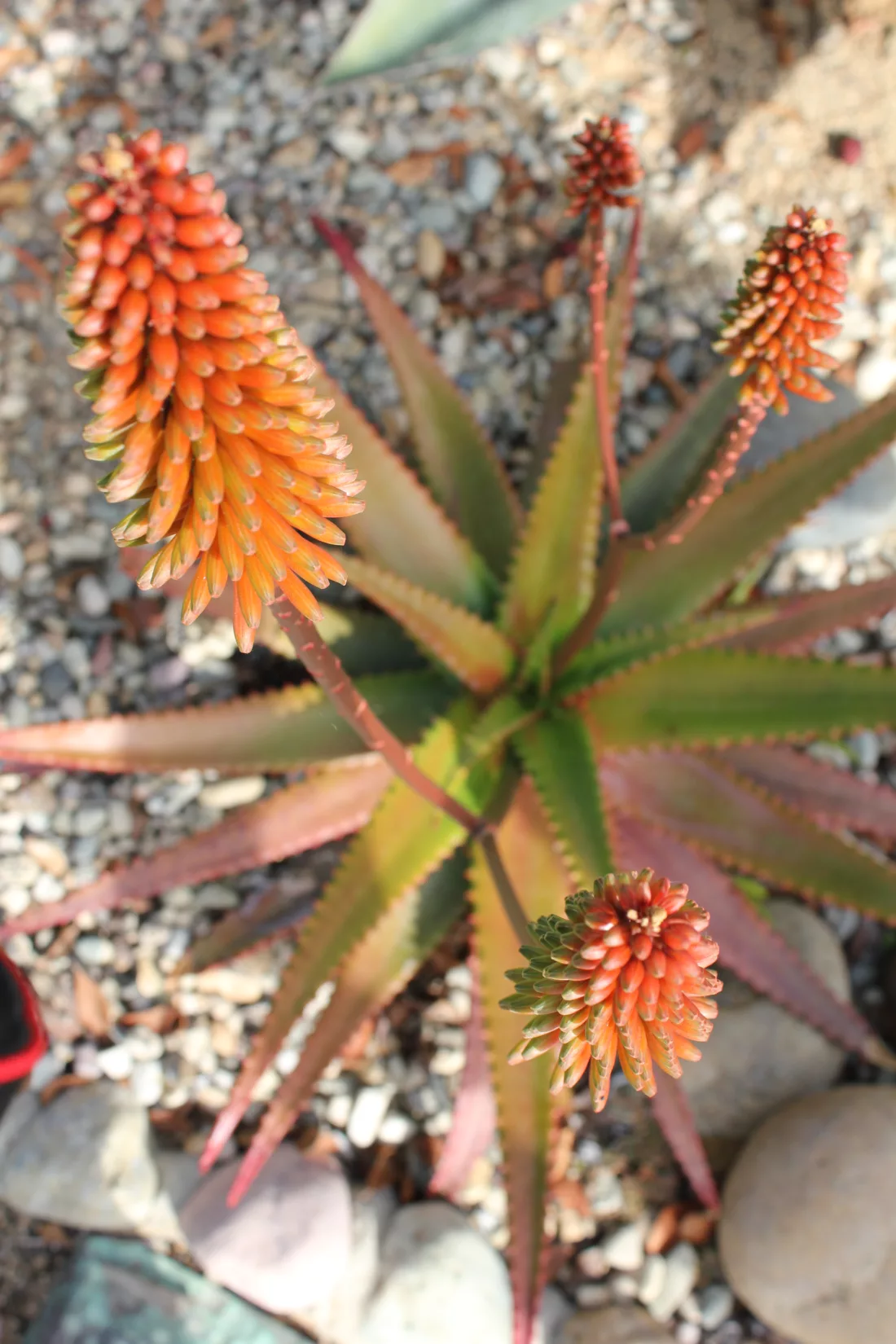
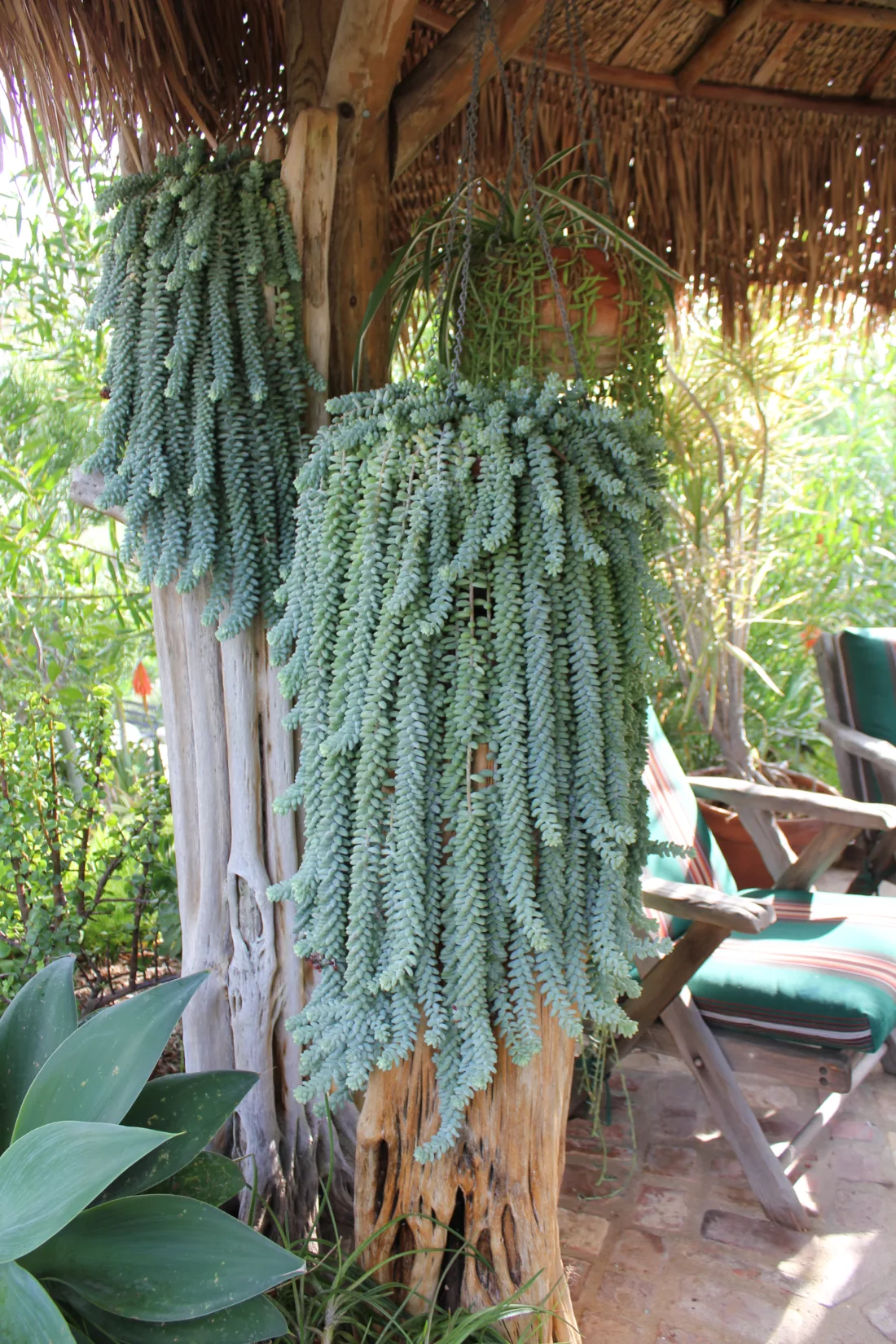
Adopting Mexican Garden Design Style
Typically, I’m not generally a fan of kitsch garden ornamentation. But the flow and elegance of this garden makes what could be junky into something extraordinarily beautiful. It is really about the sense of place and creating a garden style to completely match. The Mexican theme is regionally appropriate but also homey and comfortable. I am truly envious of people who live in southern California and can pull this off. (seriously – It just wouldn’t fly here in the North East!)
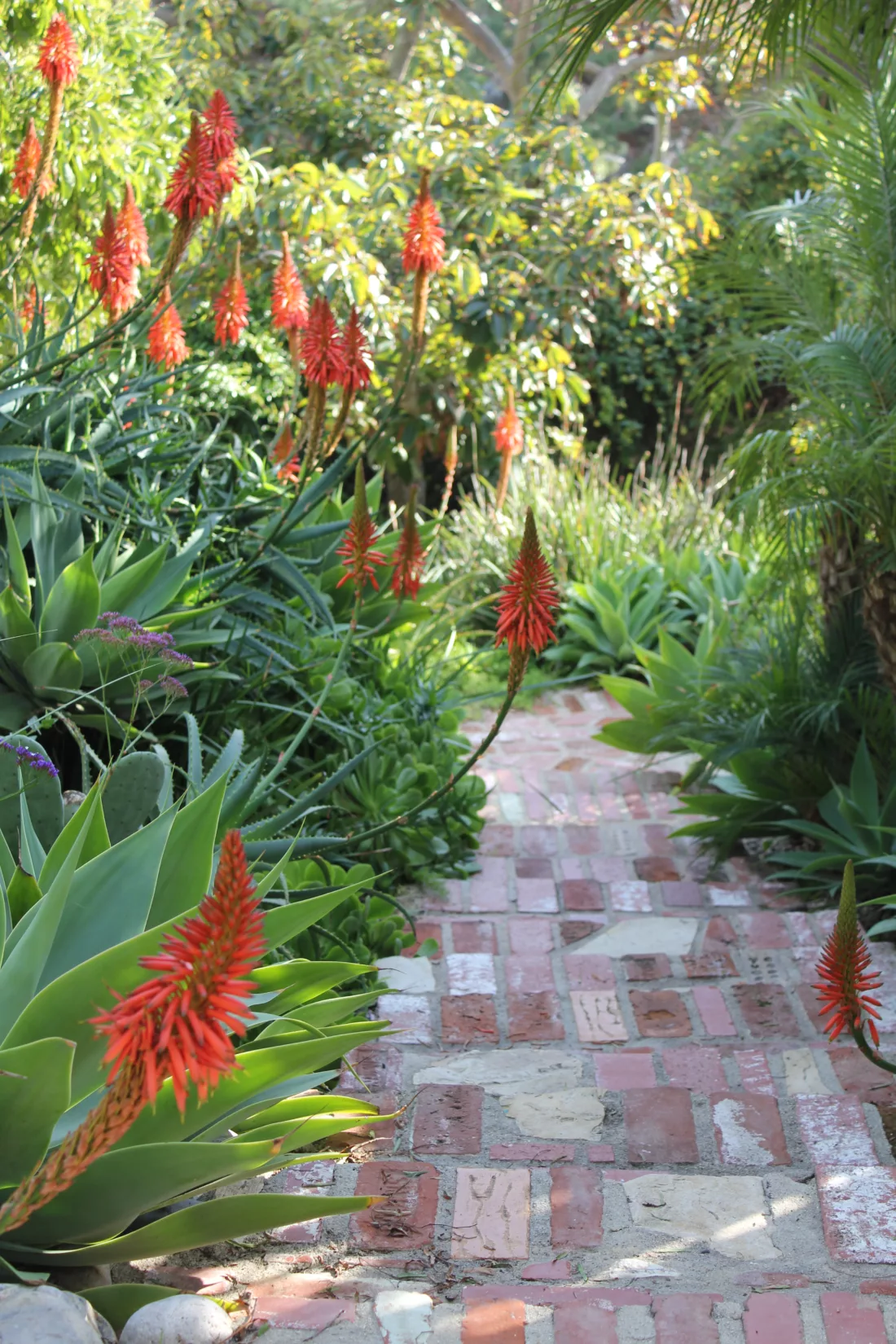
When I share gardens like this, I sometimes worry that someone will run out and inappropriately try to copy it. Like all those people in the suburbs of places like Denver or Boston who want a “Tuscan” feel. 🙄
What? No. No. NO!
I get it, you see something you love and try to bring it home. I am covetous too. But before you leave this post, take a minute to focus on what you love about your region.
Consider what makes your place different from the rest of world?
Why would other people be jealous of where you live?
Try focusing on this when you design your garden.
🧘♀️Ohmm….I am meditating on the The New England vernacular…so that I don’t rush-out and buy myself a chiminea. 🧘♀️
If Mexican design suits you locale – here are some Other Mexican Garden Style posts:
rochelle, thank you so much for featuring the evans’ garden and my blog! i like your insights about how important it is that we all embrace our local environments, culture and style. (you have no idea, however, how envious i am of your four dramatic seasons and all the rich traditions that come with celebrating them.)
for anyone who enjoyed the evans’ garden, the los angeles times featured a huge spread on their hacienda, as well as their garden, today. it’s posted on their blog (and mine) with a 21-photo tour of their home:
http://latimesblogs.latimes.com/home_blog/